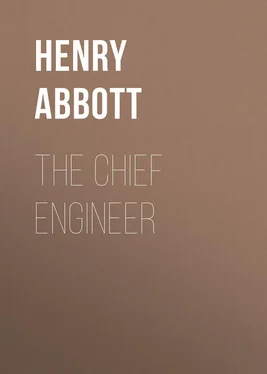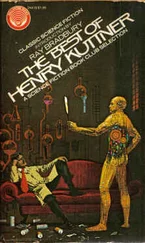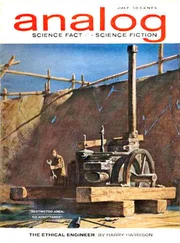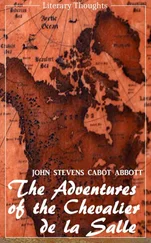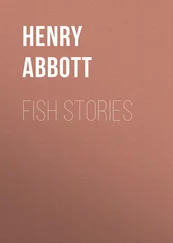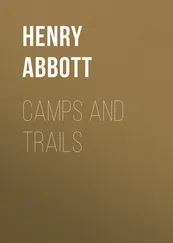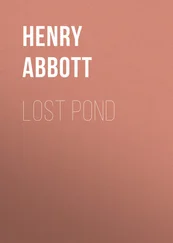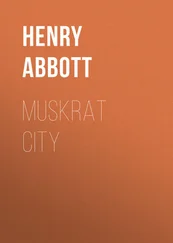Henry Abbott - The Chief Engineer
Здесь есть возможность читать онлайн «Henry Abbott - The Chief Engineer» — ознакомительный отрывок электронной книги совершенно бесплатно, а после прочтения отрывка купить полную версию. В некоторых случаях можно слушать аудио, скачать через торрент в формате fb2 и присутствует краткое содержание. Жанр: foreign_antique, foreign_prose, на английском языке. Описание произведения, (предисловие) а так же отзывы посетителей доступны на портале библиотеки ЛибКат.
- Название:The Chief Engineer
- Автор:
- Жанр:
- Год:неизвестен
- ISBN:нет данных
- Рейтинг книги:5 / 5. Голосов: 1
-
Избранное:Добавить в избранное
- Отзывы:
-
Ваша оценка:
- 100
- 1
- 2
- 3
- 4
- 5
The Chief Engineer: краткое содержание, описание и аннотация
Предлагаем к чтению аннотацию, описание, краткое содержание или предисловие (зависит от того, что написал сам автор книги «The Chief Engineer»). Если вы не нашли необходимую информацию о книге — напишите в комментариях, мы постараемся отыскать её.
The Chief Engineer — читать онлайн ознакомительный отрывок
Ниже представлен текст книги, разбитый по страницам. Система сохранения места последней прочитанной страницы, позволяет с удобством читать онлайн бесплатно книгу «The Chief Engineer», без необходимости каждый раз заново искать на чём Вы остановились. Поставьте закладку, и сможете в любой момент перейти на страницу, на которой закончили чтение.
Интервал:
Закладка:
The Chief Engineer
It was a dark night in July – very dark. There was no moon and clouds hid the stars. We were sitting by the camp fire. Bige had just kicked the burning logs together so that a shower of sparks shot straight up toward the tree-tops, indicating that there was no wind, when he said, "If you want to make that picture of deer this is just the kind of a night to go for it. You must have it dark so you can get close enough to get a good photograph. Also, this is just the kind of weather when we are likely to find deer feeding near the mouth of the river."
So with camera and flash-light apparatus I climbed into the bow end of our light-weight cedar boat, while Bige with paddle sat in the stern. We aimed toward the mouth of the river about half of a mile from camp and across the pond. No land-marks were visible, so we steered by "dead reckoning." Bige was feathering his paddle, Indian fashion without lifting it out of the water, so we silently proceeded, making no ripple on the surface and yet, at first, rather swiftly.
A few minutes later, the bow of the boat struck some yielding obstacle. My first thought was that we had hit a mossy, overhanging bank on the opposite shore of the pond. In times of stress, thoughts follow each other in rapid succession. My second thought was that the opposite shore was not mossy and overhanging, but rocky; third, that we had not been out long enough to get across; and fourth that we must have hit some animal who was swimming. But things were happening now, more rapidly than thoughts, and very much quicker than the time required to tell about them; and this latter thought was confirmed long before it was completely formulated.
Instantly, after we struck, a violent commotion occurred under the bow of the boat, water splashed in my face, there was the sound of scratching, gnawing and splintering wood, then a paw appeared on the gunwale beside me, the boat rocked and I yelled to Bige, "He is climbing aboard!!" while I lifted the camera intending to brain this indistinct shape as soon as I could see its head. This was immediately followed by the release of the weight on the side of the boat, its rocking in the opposite direction, a resounding slap on the water which threw a shower of spray over my head, in my eyes and ears. Then silence.
"Must have hit a muskrat," said Bige.
"More like a collie dog or a young bear," said I. "He surely would have swamped the boat if you had not slapped the water with the paddle, and I would have smashed my camera over his head."
"I didn't slap anything with the paddle. I wouldn't spoil your fun that way. Your friend in the water made all the noise. Wonder what he was," said Bige.
"Well, it was no measly muskrat, I'll stake my reputation and experience on that," said I.
There ended our photographing operations for that occasion, since after such a racket no deer could be expected to show himself at the pond, so we turned back to camp. On the way we discussed the possible identity of the animal with whom we had just been in collision, and who had upset our plans for the evening.
Most wild animals swim; some for pleasure, others only when it cannot be avoided. In the darkness we failed to get a clear idea of the size or shape of this fellow, we could only judge by the jolt our boat got, and the commotion he made in the water. We canvassed the possibility of its being a coon, a fox, an otter, a porcupine, a marten, a lynx or a wolf; but there was something about the habits of each that would not fit the incident and we went to bed with the problem still unsolved.
After breakfast the following morning, we went down to the shore and examined our boat. The thin part of the prow above the water line had been bitten through and a splinter a half-inch thick and eight inches long had been torn out. The marks of very sharp clean cutting teeth plainly showed at the upper end of the break. Short brown hairs were sticking to the rough edges of the bow, and on the keel for a space of eighteen inches back of the bow.
"That fellow must have thought a tree fell on him," said Bige. The boat, we found did not leak, so we went fishing. Passing a small island about a mile up the pond, we noticed a young green poplar tree had fallen into the water. There had been no wind storm for months and we did not know of any other campers on the pond so we wondered who could have cut down that poplar, and why? We went ashore to investigate. The tree we found was about four inches in diameter at the butt and it had not been chopped, but had been gnawed off. The ground about the stump was strewn with chips and one branch had been gnawed off and carried away. The tooth marks on the stump were like those on the bow of our boat, and looked as if made by a curved chisel about a quarter inch wide. The chips were from two to four inches long and were clean cut on each end and split out as if they had come from a wood chopper's axe.
Bige said, "Gosh! that looks like the work of beaver, but there are no beaver in these woods, haven't been any here for sixty years."
A few minutes later we found the branch which had been cut from the fallen poplar floating on the water near shore opposite the island. The bark had been stripped from it down to the smallest twig and it appeared white and conspicuous when seen from a distance of fifty yards.
Proceeding on our way toward the fishing ground, we presently saw the head of some animal above the surface. It was swimming toward us and waves were spreading out fan wise in its wake, on the smooth surface of the pond. Instantly we became motionless and watched its approach. When within fifteen or twenty yards of our boat it stopped, eyeing us curiously, then swung to the right and again to the left, apparently for the purpose of viewing us from different angles. Its back appearing above the surface was covered with a reddish brown fur with long grey hairs showing at intervals. There was a large white spot on the top of his head (this we later learned was not a characteristic marking, a white spot being quite unusual on animals of this family, and it enabled us to recognize our first acquaintance from among the many members of his tribe whom we subsequently met.) Two large, projecting and curving cutting teeth on the upper and two on the lower jaw appeared when he opened his mouth. There were also eight molars on each jaw. His eyes were inconspicuous and his ears were small but he had a broad, flat tail, shaped somewhat like the blade of a paddle.
Having, apparently, decided that it would be unwise to cultivate a closer acquaintance with two men in a boat, our swimmer humped his back, lifted high his broad tail and with it struck the water a powerful slap, the noise of which reverberated from "Mud Pond Mountain to East Inlet Holler" and it threw a shower of water and spray eight or ten feet into the air, looking like some of the war pictures of exploding mines.
The animal disappeared under water but a long line of air bubbles coming to the surface marked his progress under water. These we followed about two hundred yards to where they ended at the opposite shore. A closer examination disclosed the entrance, about two feet under the surface, of a burrow which seemed to rise under the high bank.
"Well," said Bige, "that's the fellow who met up with our boat last night. He's a beaver all right, but where in tunket did he come from?"
The incidents here related occurred while we were camping at Cherry Pond, seventeen years ago. We had learned in many conversations with Mitchell Sabattis (an Indian who died at a very advanced age a few years ago, and who was the oldest inhabitant of this region), about the Indians trapping beaver here, and how they sold hundreds of skins to John Jacob Astor, who became rich dealing in furs which he purchased throughout the northern forests and in Canada.
Читать дальшеИнтервал:
Закладка:
Похожие книги на «The Chief Engineer»
Представляем Вашему вниманию похожие книги на «The Chief Engineer» списком для выбора. Мы отобрали схожую по названию и смыслу литературу в надежде предоставить читателям больше вариантов отыскать новые, интересные, ещё непрочитанные произведения.
Обсуждение, отзывы о книге «The Chief Engineer» и просто собственные мнения читателей. Оставьте ваши комментарии, напишите, что Вы думаете о произведении, его смысле или главных героях. Укажите что конкретно понравилось, а что нет, и почему Вы так считаете.
